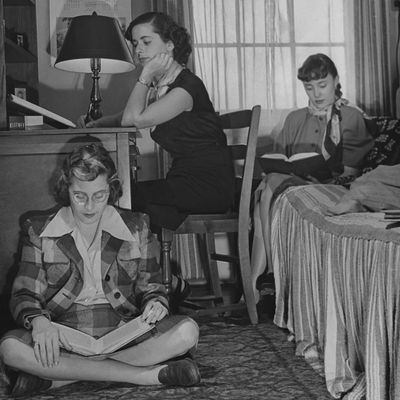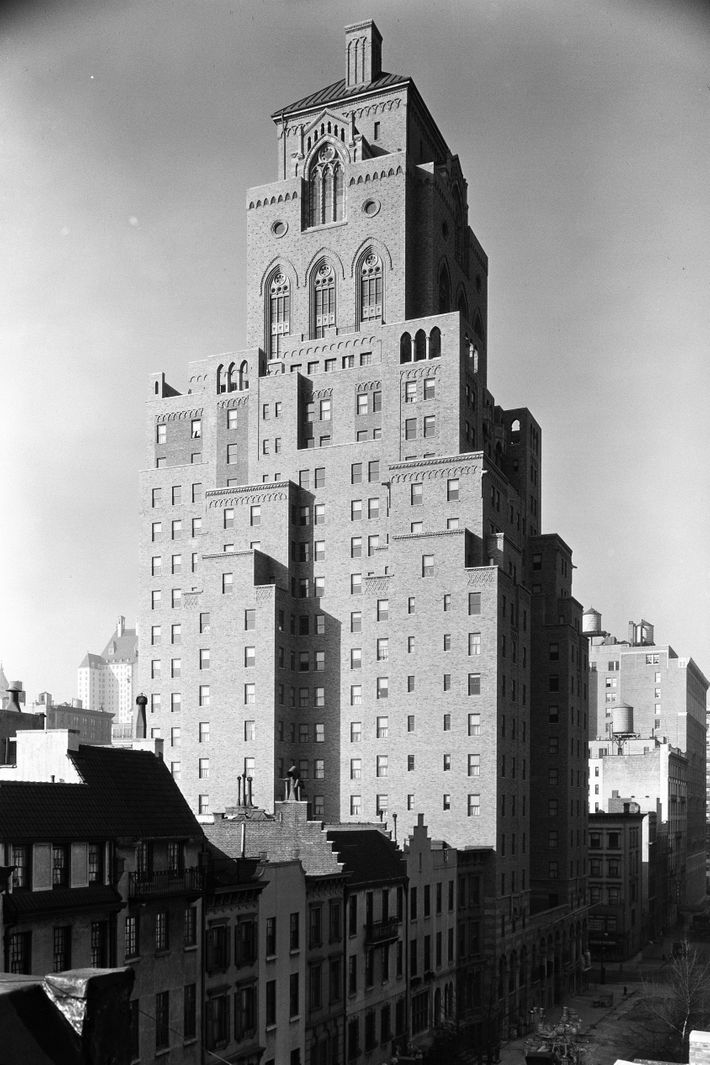
Wedged between prewar walk-ups on a quiet street near Riverside Drive, the Brandon Residence for Women charges just $1,200 a month — a bargain by Upper West Side standards. You get a single furnished room (with a bed, desk, drawers, and closet), two cooked meals a day (of varying quality), weekly housekeeping, first-floor Wi-Fi, in-house laundry facilities, and the near impossibility of a room in Manhattan all to yourself. Kind of.
Five months ago, I was a living cliché: a midwestern girl moving to New York City for my dream magazine job. I had two weeks to move from Chicago and find an apartment, and I had no leads. With a mental breakdown brewing over questionable Craigslist and Airbnb ads, I found myself exchanging emails with Catholic nuns: They run five of Manhattan’s ten surviving women’s boardinghouses, where more than 1,000 women in the city now live.
I had already stayed in one, the Webster Apartments, during a college internship; a classmate had suggested it as an alternative to subletting. But this time the Webster had no available rooms, and a frantic internet search exhumed outdated websites for more women’s residences than I knew existed. My calls and email inquiries elicited application materials from housing supervisors and sisters such as Mother Esperanza, who signed every note, “May God bless you.” I didn’t end up with the nuns, though — instead, I found an opening at the Brandon Residence.
It’s not for everyone: No men (family included) are allowed past the first floor, meal times are strict, and it’s $50 for a friend to stay overnight on a stained fold-up cot that takes up half of my room. Similar rules apply at the city’s other women’s residences, some of which also have curfews. The no-boys mandate is universal.
Women here are mainly twentysomething working professionals, Juilliard School or international students, and interns. Some of the residents are displaced Manhattanites in their 50s, 60s, and 70s who ended up here because of layoffs, divorce, and other life-altering circumstances. All of us are here for the location and the price.

It’s not glamorous, but New York women have lived in places like the Brandon for over 150 years. Women’s boardinghouses were most prevalent from 1880 to 1930, when they provided a safe, temporary living arrangement for single women working in the city. This is still their mission today. In 1922, there were reportedly 58 large, nonprofit women’s residences in Manhattan. Today, there are ten; they cluster throughout Chelsea and Midtown West, with a few buildings on the Upper West and Upper East sides.
The Barbizon Hotel for Women, New York’s most famous women’s residence of the 20th century, reigned as “the city’s elite dollhouse,” according to one Vanity Fair feature. Opened in 1927, the Barbizon housed Grace Kelly, Liza Minnelli, Joan Crawford, Betsey Johnson, Joan Didion, and a slew of other fame-bound women who moved to New York to start their careers. Sylvia Plath’s novel The Bell Jar is based on her time at the Barbizon, and vintage Hollywood films like Stage Door, a 1937 movie starring Katharine Hepburn and Ginger Rogers, re-created its allure. Rose*, my seventysomething next-door neighbor and a former Barbizon guest, embodied this classic New York glamour; quite fabulously, she wore a fox-fur headpiece to dinner every night.
In the 1920s, the celebrated independence of the flappers marked the first decline in women’s residences, and by the 1960s, it was increasingly acceptable for women to rent their own apartments. As more women chose to live elsewhere, the real-estate market pressured many women’s residences to shutter their doors. Several of them are now luxe hotels and multi-million-dollar condo buildings that have been designated New York City landmarks for their historic design, which the architects crafted specifically for the purpose of housing professional women at the time, including Barbizon/63 and the Martha Washington hotel.
Am I crazy to live in a modern-day virgin vault? Perhaps. The easy explanation is the price: A shared Upper West Side apartment would cost $1,500 a month (or more) before food or utilities. But I’m also delaying the “real life” that, coming out of college, I promised myself I’d lead. At this point, that would mean finding strangers to live with and committing to the slaughter of my entry-level salary. Instead, I co-exist in a multigenerational sorority of sorts, waiting for the right time to set out on my own.
I saw a girl my age sneak her two brothers up to her room; a staff member appeared on the eighth floor to kick them out within 30 seconds. While brushing my teeth in the shared bathroom, I’ll often hear the slow clacking of a metal cane inching down our hallway, announcing the arrival of an elderly neighbor in her nightgown; she’ll shuffle up to the sink for her nightly beauty routine. Every week, a maintenance man arrives on each floor to make repairs: “Man on the floor!” he’ll say, and then go about his business. At dinner, after we file through a cafeteria-style serving line, I see more camaraderie among the foreign girls, who share a language, and among the older women, who sit together in small groups and banter about a friend’s new pacemaker, or echo one another’s complaints about the food. The twentysomething Americans more often sit alone, hunched over their phones. Perhaps these girls are like me, recalling middle-school lunchroom woes and adapting to solitude while dining among strangers. Refrigerators aren’t allowed, so during the winter I placed food up against my window; in summer, I’ll buy a small cooler and get ice from the machine downstairs.
This is, of course, all bizarre. But I love it every time I meet a New Yorker and we exchange the most basic small talk: “Where do you live?” I get to give a wildcard answer, the most unlikely conversation starter, and the best excuse to give a guy at a bar when he’s trying (and failing) to come home with me. It’s thrilling, in an absurd and classically beautiful way, to live in a relic of what the city once was.
While visiting each of Manhattan’s ten remaining women’s residences for this story, I asked about a framed New York Times article in the lobby of the Webster Apartments; it’s aptly titled “Where the Boys Aren’t.” (Full disclosure: I moved to the Webster in January for a shorter commute to work. It’s $7 less a month, and I get a sink in my room.) Siobhan McManus, the executive director there, reflected on the story’s headline. “It’s not about boys,” she said. “This is about women. You come in, we make sure that everybody gets fed well, and then you go off, you do your job, and you do what your life dream is. And it’s like your little family.”
A room of one’s own. It’s what I need right now, and it’s what the women in this room before me needed. It’s what I’m grateful for every morning when I step out into Manhattan like the women on this same street years ago, just trying to make it.
*Name has been changed.




